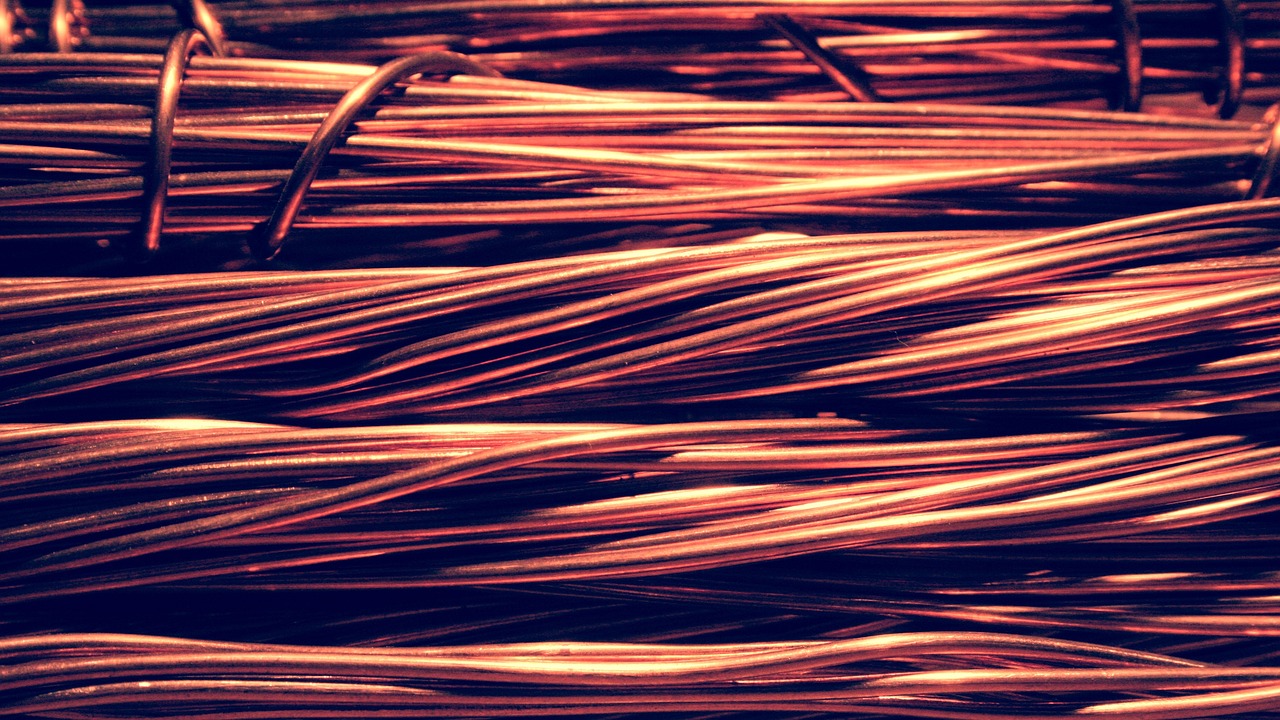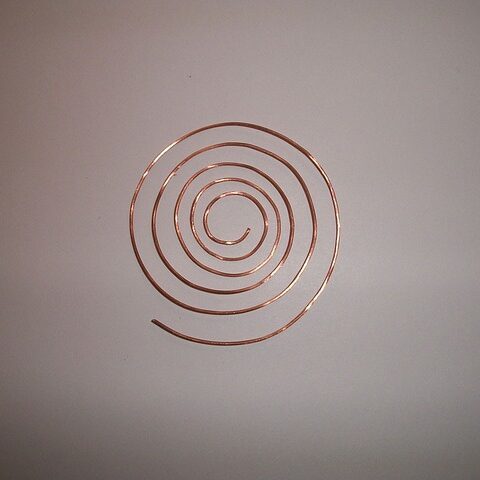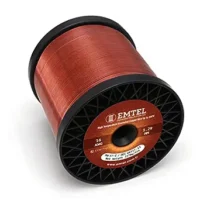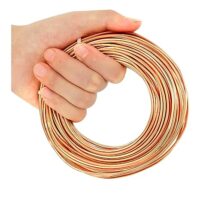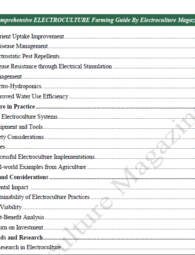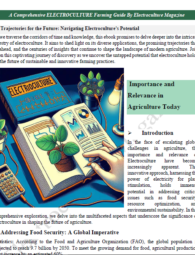Here you will find Electroculture Magazine. This issue delves into the fascinating world of electroculture and reveals the important function that copper wire serves in this cutting-edge industry. Due to its exceptional electrical conductivity and outstanding adaptability, copper has become an essential element in electroculture techniques. Learn how it may be used to root systems, create electrical circuits, and interact with plants in creative ways that increase agricultural yields and encourage ecologically friendly farming practices. Get ready to be mesmerized by the alluring fusion of electroculture and copper wire.
Introduction
The history of the versatile and often used metal copper dates back thousands of years. It is a reddish-brown tint, and electrical and thermal conductivity are among its best qualities. Due to its strong malleability and ductility, copper may be easily molded and sculpted into a variety of goods. It has been utilized by people since the dawn of humanity and has contributed significantly to the rise of civilizations. Copper has been used in a variety of fields, including electrical engineering, plumbing, building, and more, dating back to the Bronze Age.
It is an environmentally responsible choice due to its resistance to corrosion and capacity to be recycled. Additionally, copper has health advantages because it is a crucial micronutrient for the human body. Overall, copper is a priceless metal with a variety of applications in our daily life.
Role of Copper wire in Electroculture
The use of electricity in agriculture to promote plant development and increase agricultural yields is known as “electroculture.” Several possibilities exist for copper wire to contribute to electroculture:
- Electrical conductivity: Copper is a superb electrical conductor, making it the perfect substance for moving electrical current. Within an electroculture setup, copper wires can be used to build electrical circuits or systems. These circuits are capable of supplying the soil or plants with precise electrical energy doses that stimulate a variety of biological and physiological processes.
- Electrodes: Copper wires can be used as electrodes in applications using electroculture. An electrical current is run through electrodes buried in the ground or fastened to the plants. The copper electrodes allow effective distribution of electrical energy to the targeted areas while facilitating the flow of power.
- Effects of ionization: Ionization can occur when an electrical current flows through a conductive substance, such as copper wire. Ionization is the process of creating ions, which can have an impact on the availability of nutrients, soil pH, and other elements that affect plant growth. Copper wires may aid in the ionization process and possibly improve plant roots’ ability to absorb nutrients.
- Pest Management : Copper wires can also be used in pest management to repel some bugs. Because copper contains antibacterial and antifungal qualities, it can serve as a barrier to keep pests like snails and slugs from getting to plants when utilized in wire form. It is possible to apply electrical current to the copper wire to have a minimally effective deterrence impact on these bugs.
It’s crucial to keep in mind that the field of electroculture is complicated and constantly changing, and the precise function of copper wire may change based on the electroculture technique or system being used. When using electroculture techniques, it is always advisable to stick to predetermined rules and seek advice from professionals in the industry.
How To Use Copper Wire For Electroculture
When using copper wire for electroculture, electrical circuits or systems are built to provide controlled electrical energy levels to soil or plants. An overview of using copper wire for electroculture is provided here:
- Choose the appropriate electroculture method: Electrostimulation, electrohydroponics, and soil electrification are a few examples of electroculture methods. Pick a strategy that fits your objectives and available resources.
- Schedule the circuit: Select the components and circuit design that will make up your electroculture system. Identifying the power source, electrical conductors (copper wires), electrodes, and control systems are all part of this process.
- The gauge and thickness: of the copper wire you choose should be appropriate for your electroculture system. The wire needs to be strong enough to survive the weather conditions and capable of carrying the desired electrical current.
- Install the electrodes: Electrodes can either be buried in the soil or fastened to the plants, depending on the electroculture technique. Electrodes made of copper are frequently used because of their conductivity. Place the electrodes where they are needed, making sure they make good contact with the soil or plant tissues.
- Form a circuit by joining the copper wires together:The power supply, electrodes, and control elements like switches or timers are frequently included in a circuit. To avoid electrical shorts or failures, make sure the insulation is adequate and the connections are solid.
- Control the electrical energy: Install control systems to limit the amount of electricity that is sent to the soil or plants. This may entail modifying the electrical pulses’ voltage, current, or duration. For suitable energy levels, seek the advice of specialists or refer to the relevant electroculture recommendations.
- Observe and correct: Keep an eye on the plants and note how they react to electrical stimulation on a regular basis. Depending on the unique needs of the plants and the electroculture technique being used, adjust the electrical parameters as necessary.
- Observe safety precautions: Safety must always come first while working with electrical systems. Be sure to go by the rules for electrical safety, which include employing the proper grounding, insulation, and safety measures to prevent electrical fires or shocks.
- Record and evaluate outcomes: Keep track of the electrical settings used, the electroculture system configuration, and the plant development and yield that resulted. Utilize data analysis to determine whether the electroculture process is beneficial and, if not, to suggest changes.
Final Words
Finally, it should be noted that copper wire is essential to electroculture, the use of electricity in agriculture. It is the perfect material for building circuits and dispersing controlled electrical energy into soil or plants due to its great electrical conductivity. As electrodes, copper wires allow for the flow of electricity and cause ionization effects that can improve nutrient uptake and affect soil pH. Due to its antibacterial qualities, copper wire can also be employed as a barrier to keep out pests. But it’s crucial to approach electroculture with careful planning, observance of safety procedures, and expert input. Copper wire’s adaptability and potential to maximize plant growth and crop harvests are demonstrated by its usage in electroculture.
Buy Our Handcrafted Electroculture eBook Now…
